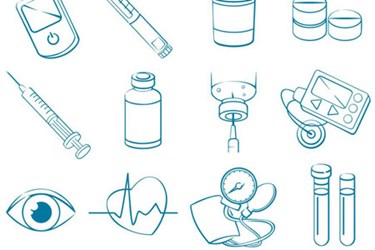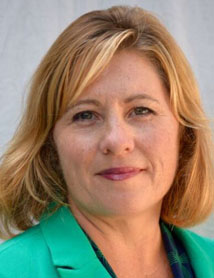MDR-TB Study Requires A New Approach To Trials

By Ed Miseta, Chief Editor, Clinical Leader

Otsuka Pharmaceutical has been an industry leader in TB drug development for over 30 years. The company is currently focused on MDR (multidrug-resistant)-TB, which refers to a form of the disease that is resistant to at least the two main first-line drugs available on the market.
In a recent clinical trial, Leesa Gentry, Director of Global Clinical Management for Otsuka Novel Products, was responsible for implementing the clinical trials across several continents. With many of the sites lacking proper personnel, training, and equipment, her team had to perform a lot of prep to ensure the sites were prepared for the task.
In this Q&A, Gentry discusses MDR-TB and the challenges she needed to overcome to make the trial a success.
Ed Miseta: Tell us about MDR-TB and how it’s treated.
 Leesa Gentry: About 3.3 percent of new and 20 percent of previously treated TB cases now involve resistant strains, which create a bigger problem for existing treatments. There is even a subset of MDR-TB that’s extensively resistant, which means the strain is also resistant to major second-line drugs. You always have to treat TB with multiple drugs, since there isn’t one medication that will solve the problem. The standard regimen is actually four drugs, and for MDR-TB it could be as many as five or six. We sometimes say that MDR-TB is a man-made disease, because it can often result from either mismanagement or lack of compliance on behalf of the patient. It’s a very difficult disease to overcome, generally requiring 12 to 24 months of treatment.
Leesa Gentry: About 3.3 percent of new and 20 percent of previously treated TB cases now involve resistant strains, which create a bigger problem for existing treatments. There is even a subset of MDR-TB that’s extensively resistant, which means the strain is also resistant to major second-line drugs. You always have to treat TB with multiple drugs, since there isn’t one medication that will solve the problem. The standard regimen is actually four drugs, and for MDR-TB it could be as many as five or six. We sometimes say that MDR-TB is a man-made disease, because it can often result from either mismanagement or lack of compliance on behalf of the patient. It’s a very difficult disease to overcome, generally requiring 12 to 24 months of treatment.
Miseta: Does that make treating it in clinical trials more difficult?
Gentry: The long treatment cycle can result in a high number of patients not following the prescribed regimen, as it’s challenging for most to go for daily dosing that is directly observed by staff. Unfortunately there are also very high side effects, due to many of the companion drugs being highly toxic. The resulting sickness and vomiting contribute to the burdensome treatments, which leads to patients starting and stopping the treatments, further complicating the drug resistance of the disease.
Miseta: Are there geographic regions where the disease is most prevalent?
Gentry: Although India, China, and the Russian Federation lead what the WHO calls high-burden countries, those are not the only areas where MDR-TB is found. For extensively drug-resistant TB, which is the worst form of MDR-TB, there are already over 100 countries that have reported such cases. Generally, countries with high rates of HIV, alcohol and tobacco use, and crowded, unsanitary conditions all seem to have a higher incidence of the disease.
Miseta: A recent trial you conducted for MDR-TB required additional personnel and equipment at many of the sites. Was that a difficult process to manage?
Gentry: I don’t know if I’d call it difficult, but it did require our team to make a lot of changes in how we prepared for and ran a trial. Equipment that allows sites to evaluate sputum cultures had to be rented and brought in. Since most of the physicians at these sites spend their time treating patients, we had to bring in additional personnel to assist in picking up the additional work that had to be done. Many of these individuals had not spent a lot of time working on clinical trials, and had to be trained on how to properly record data and report adverse events. We worked with CROs on this trial and they were a big factor in enabling us to find the right personnel we needed for the study.
Miseta: Was the effort successful?
Gentry: The treatment has already been approved in three countries, and we are thrilled that sufferers of this disease now have a new treatment option. However, as a professional clinical researcher, I also believe it is vitally important to leave a treatment paradigm in better shape than you found it. For example, Otsuka currently has a pediatric study underway in Philippines and South Africa. For this trial we actually changed the paradigms for how children are treated. Due to the relative toxicity of the second-line drugs, children were not always treated effectively. Children are more difficult to diagnose because, unlike with adults, you can’t really confirm, through sputum, that the patient actually has MDR-TB. You actually have to take a clinical guess that the patient has MDR-TB.
Otsuka required sites to implement a method of finding young patients through their association with known adult MDR-TB cases. If a child is living in a home with an adult, and the adult has a confirmed MDR-TB diagnosis, then children developing symptoms were likely to have it as well.
Because of that one change, we are now treating many more children for MDR-TB in the Philippines. I think that’s an unexpected benefit of the trial. We have a new medication for treating TB, and we can now better identify patients for the trial. We are also now working to streamline the protocol as much as possible to fit into current treatment paradigms. Over the last eight years, there have been other advances in MDR-TB treatment and point of care diagnostics, where we can much more rapidly determine a patient’s resistance pattern and get them on a treatment regimen that’s not empirical, but specific to their current situation. These developments will make our trials even more effective in the future.
